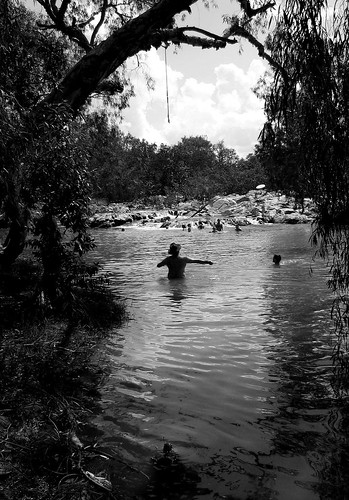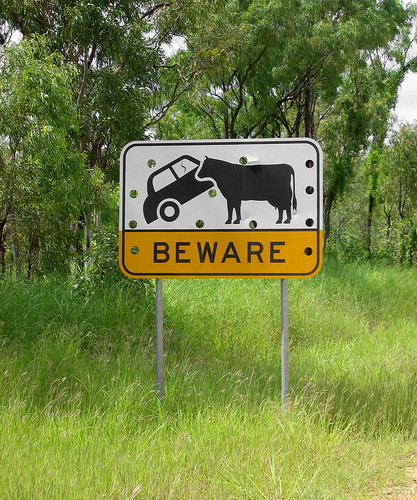Calling In All Kinds
I'm done with Finals! But before you get jealous, and envision Roger lying beside some totally clutch lagoon with sea turtles lazily swimming by, my situation is actually slightly more complicated. Though I'm done with Finals, that means that I've started on my Directed Research project, a massive effort that will consume my life for the next month.
I've chosen to have my project advised by my Forest Management professor, a jolly young guy who's totally obsessed with trees, cricket, and his fiance. There's four other students doing their research with him, and us five students have already started forging close bonds.
Warning: A lot of Biology nerdiness ahead
Dr. Curran's overarching research goal is basically to investigate drought resistance traits that are present in dry rainforest trees, and use those traits to predict what wet rainforest species would survive the increasing aridity associate with global warming.
I was reading his PhD thesis, which basically concerns the same topic except applied to the less seasonal environments of New South Wales, when I stumbled across a really intriguing result that was almost lost in the depths of the thesis. He found an extremely significant relationship between leaf size and the angle that leaves hang under the branch (leaf angle). Extremely significant, in that the P-value was less than 0.001. That's intense.
The relationship between the traits was positively correlated, in that leaf size will increase with leaf angle and vice versa. However, there were two species with very high leaf sizes and leaf angles, and if you took those out of the analysis...suddenly you got a negative correlation, and it was still statistically significant! I was completely blown away by this. Dr. Curran explained it by tying it in with drought resistance strategies, which I'll buy. A positive correlation implies a tradeoff between leaf size and leaf angle, which would likely work for the larger-leaved deciduous species who are drought avoidant. For the smaller-leaved sclerophyllous species though, it seems that they adopt a different strategy, where both traits are favorable and ensure that the plants are totally drought tolerant.
So my research will be specifically focused on this relationship between leaf size and leaf angle, and also any other significant combinations of coordinated traits. Dr. Curran found those results in the dry rainforest of New South Wales, and I want to see if they apply to the dry rainforest of Queensland, which is far more seasonal. Even more interesting, I want to see what kind of relationships appear in the wet rainforest around the Centre here, since Dr. Curran didn't investigate that in his thesis. I am really, really excited at seeing what comes out of this.
End Biology nerdiness
Since we want to compare trees in wet rainforest with trees in the dry near-deserts, it was necessary to take a field trip out into the Outback! So last week, we spent three days at Undara National Park and Forty Mile Scrub National Park. We pretty much worked from dawn to dusk to collect samples to bring back to the lab for analysis. It was completely exhausting, but possibly the most rewarding field work that I've ever done.
We did get one break though: the park rangers gave us a free tour of the famous Undara Lava Tubes. Basically, this massive volcano erupted thousands of years ago, forming huge rivers of lava. Awesome. The surface of the river hardened, forming this solid shell of basaltic rock, while liquid lava continued to flow through. You can still witness this occurring in Hawaii. Today, there aren't any more rivers of lava sadly, but you can still see the hardened lava tubes, which basically look like long, cylindrical caves, filled with bats. It normally costs quite a lot of money to get tours of these lava tubes, but as research scientists, we got the tours for free! Other highlights of the trip: two Emus around the campsite, and a stop at some relaxing hot springs on the way back, which was really surreal. It was just this normal-looking creek flowing through a forest, but you step in the water and it's boiling freaking hot.
And now for the past few days, we've been collecting the wet rainforest data, finishing this afternoon. I've been ripped apart by wait-a-while thorns, but I've managed to successfully avoid both stinging trees and leeches, with today probably being the last day I will ever encounter the stinging tree. A sad day to be sure, I shed many tears. After this, it's a week in the lab processing data, and then I'm getting started on that 40 page paper I gotta write. Gulp. It's looking like you may not be hearing from me much for the rest of April.
So I guess I'll leave with some more photos then. I haven't gotten to the internet cafe in several weeks, so these are all old pictures, from the trip to Chillagoe back in February.
The Royal Arch Caves, which are actually aboveground, inside the hills.

At the swimming hole. I think this is one of the best photos I've ever taken.

A road sign on the drive out. This is no joke, it's apparently a very serious problem, and we had a few close calls ourselves.

Labels: australia




